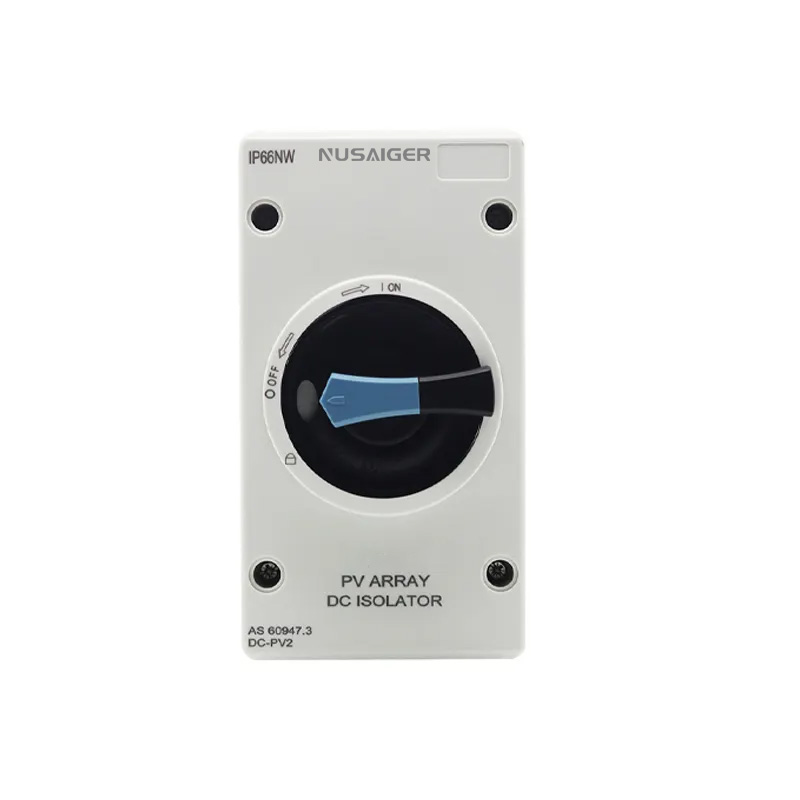Comparing AC vs. DC Solar Isolator Switches: What You Need to Know
In solar PV systems, both AC and DC isolator switches are used — but they serve different roles and require distinct features. Understanding the difference is essential to proper design, safety, and compliance.
1. DC Isolator Switch: For PV Array Disconnection
DC isolators are typically installed between the solar panels and the inverter. Since DC current doesn’t zero out like AC, switching it requires robust arc suppression mechanisms. These switches often have multiple poles and high voltage ratings (e.g., 1000V DC).
2. AC Isolator Switch: For Grid or Load Disconnection
AC isolators are placed between the inverter and the distribution board or utility meter. They’re generally easier to switch due to the zero-crossing nature of AC, and they have lower arc handling requirements. Standard ratings include 230V or 400V AC.
3. Key Technical Differences
- Switching Mechanism: DC isolators need magnetic blowout chambers or arc chutes; AC switches use simpler contacts.
- Size and Design: DC isolators tend to be bulkier due to insulation and arc suppression needs.
- Failure Consequences: A failed DC isolator poses higher fire risks due to sustained arcing.
4. Regulatory Considerations
Many national standards require both types of switches in solar installations. Make sure to consult your local electrical code and install compliant equipment accordingly.
Conclusion
Choosing the correct isolator switch — AC or DC — ensures not only regulatory compliance but also system safety and longevity. Always match the switch type to its specific role in your PV system.



